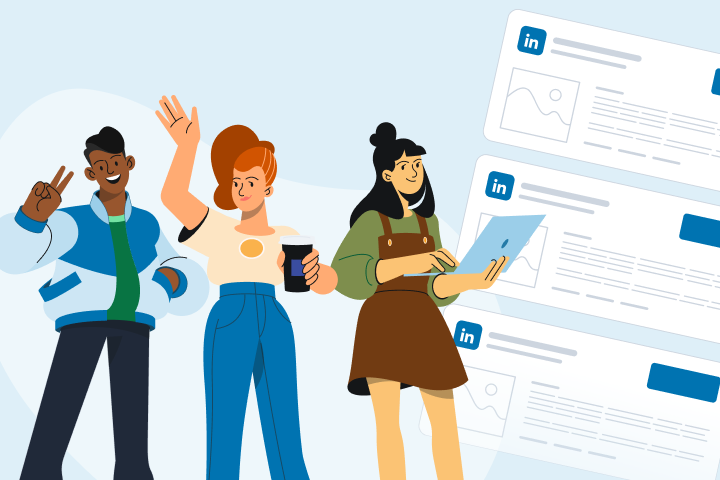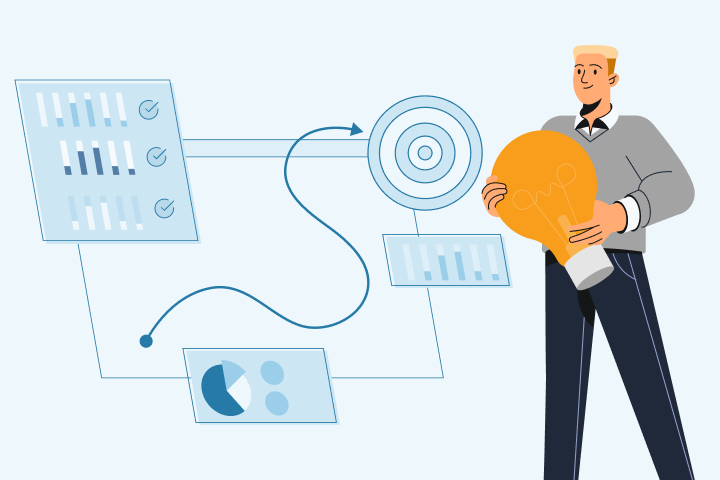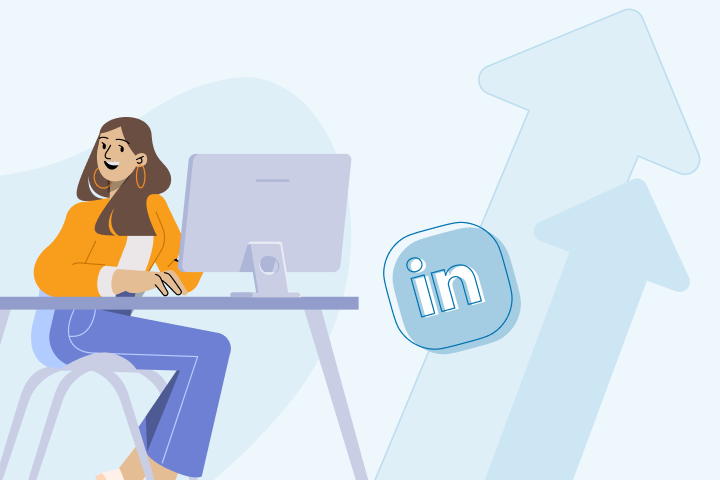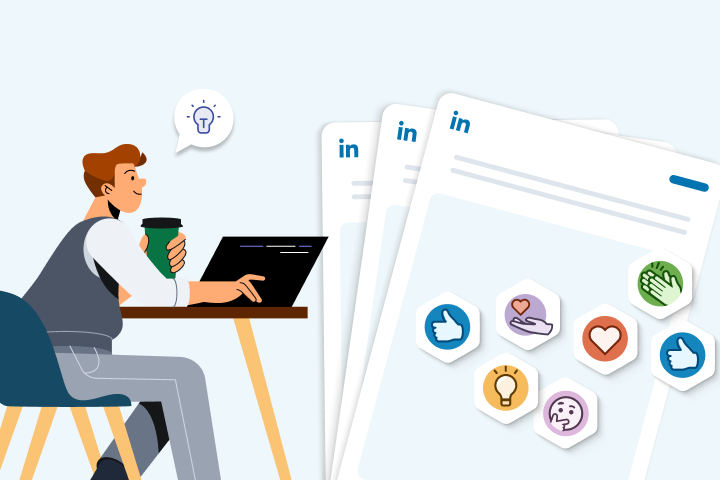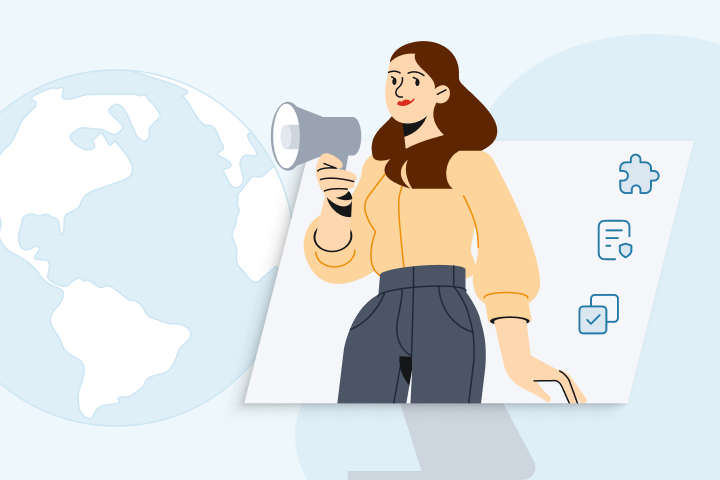Employee Advocates vs. Influencers: Who Builds More Trust?
Recommendations from other people you trust tend to be much more compelling than branded advertising campaigns, so it's no surprise that marketing teams are doubling down on brand advocacy.
However, there are two types of brand advocacy: internal and external advocacy.
Each form of advocacy has unique pros and cons and is ideal for different scenarios.
In this post, we'll explore these differences so that you can select the best advocacy strategy for your brand to reach your marketing goals.
Internal Advocates vs. External Advocates
Before comparing these two forms of advocacy, let’s first define both internal and external advocacy.
What Is Internal Advocacy?
Internal advocacy is when people (executives, employees, partners, investors) who are invested in the company or incentivized to see the company succeed, promote the brand to their network.
The promotion could be a social media post, an in-person conversation, a Slack conversation, or an email blast to their personal email list.
What Is External Advocacy?
External advocacy is when an individual with no investment in the company's success promotes the brand to their network. An external advocate could be an influencer, a customer, or anyone else who does not have an incentive to see the company succeed.
External advocates can be paid to promote the brand, so this form of advocacy isn't necessarily unbiased. Nevertheless, external advocacy isn't always organic.
Which Type of Advocate Is More Beneficial?
There is no definitive best form of brand advocacy. Below we'll discuss the unique benefits and drawbacks of internal and external advocacy and how they can help your brand achieve its marketing goals.
The Benefits of Internal Advocacy
Some of the top benefits of internal advocacy that we’ll discuss below include:
- Cost effectiveness.
- Accurate, brand approved messaging and positioning.
- Promotion is more authentic as advocates have personally invested in the brand.
- Positive impact on culture and engagement.
A Cost Effective Brand Promotion Strategy
The most obvious benefit of internal advocacy is that the brand typically doesn't have to pay the internal advocates to promote the brand because they're incentivized to see the company succeed anyway.
For example, an investor is more than likely happy to post about the company on social media as they want to see a positive return on their financial investment. Similarly, employees are happy to tell their network about the brand because the company's success makes their resume look better.
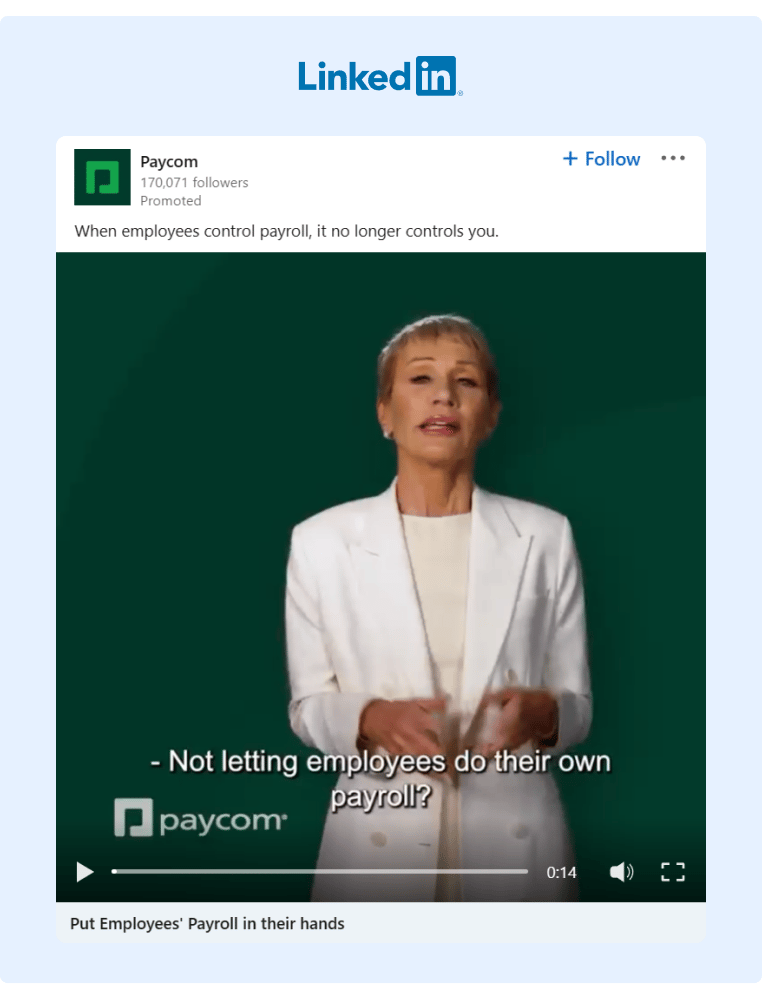
The company can offer additional incentives to internal advocates, such as prizes or bonuses, but rewards typically aren't essential to get internal stakeholders engaged.
Accurate, Brand Approved Messaging and Positioning
Another benefit of internal advocacy is that the internal advocates intricately understand the value of the business and how the product/service works.
This means they're more likely to use on-brand messaging and accurately pitch it to their network. In contrast, an external advocate might not fully understand what the company is really about and the value it offers, which could create confusing messages about your brand and its value.
Authentic Promotion Thanks To Personal Investment
Internal advocates have invested in the company at their own personal risk, signifying that they genuinely believe in its value.
For example, an employee can only choose one company to work for, and an investor can only choose a handful of companies to invest in. By selecting your company, they chose not to invest their time or money in thousands of other companies.
Therefore, any promotion internal advocates do is genuine and sincere. This sincerity comes across to their network, making internal advocacy more authentic than external advocacy efforts (e.g., influencer marketing) where the external advocate may be paid to promote the brand with little to no personal risk.
Positive Cultural Impact
Internal advocacy can also positively impact the company's culture.
When employees proudly promote the brand to their audience, the sense of pride is contagious, encouraging other team members to promote the brand and over-deliver on projects. This sense of pride also helps the employees remember the mission they're striving to achieve and persevere through difficult times in the company.
This confidence is also often apparent to the advocates' networks and can attract top talent to join your company.
What Are the Drawbacks of Internal Advocacy?
Like any marketing strategy, internal advocacy isn't a flawless solution. Here are just a few of the drawbacks of internal advocacy and how you can address these issues.
Achieving Buy-In From Employees
Some employees simply don't wish to participate in employee advocacy, though this is often due to deeper cultural problems.
However, most employees and other internal advocates simply don't understand the impact of internal advocacy and are therefore unmotivated to invest the time and effort required to participate.
To address these issues, you can first explain the impact of internal advocacy on the brand's bottom line. Ideally, provide data or show deals won thanks to internal advocacy.
Once employees understand the impact of internal advocacy, they may be more motivated to participate, though still fail to engage due to the following issues:
-
They don't know what content to share or what to say.
-
They're afraid they'll say something off-brand.
-
They simply forget to engage.
The good news is that you can solve these problems by using an employee advocacy tool, like GaggleAMP, that allows you to assign specific engagement activities with explicit instructions to specific employees.
For example, you can select an engagement activity (e.g., like, comment, share, etc.) for a specific platform (e.g., LinkedIn, X, Facebook, etc.) and even include a link to a specific social post to engage with and guidelines on what to say.
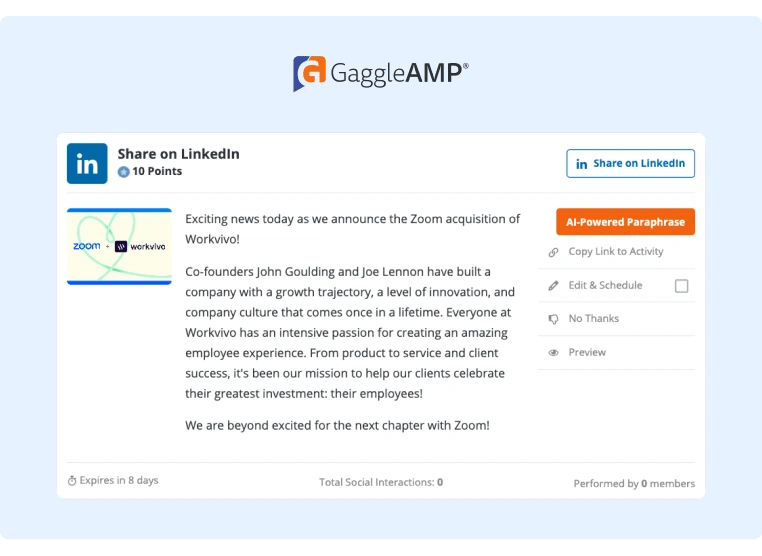
This format solves all of the key challenges mentioned above that prevent employees from participating in your employee advocacy challenge.
Content Creation Is Time Consuming
The most popular (and often most effective) form of internal advocacy is posting content on social media.
However, the bar for creating quality content is higher than ever before, and it takes time to create content that people want to share.
Some creators take hours to create a single social media post, and many internal advocates burn out and quit engaging altogether.
For people who aren't naturally creative, the thought of staring at a blank screen and trying to develop a content idea is intimidating.
The good news is that AI can make this process much more efficient. For example, here at GaggleAMP, we offer a built-in AI social media post generator that can create social media posts for employees and other internal advocates.
Therefore, marketing managers can assign an employee an engagement activity with pre-written text generated by AI. The employee can then edit the post or schedule it for publishing as is.
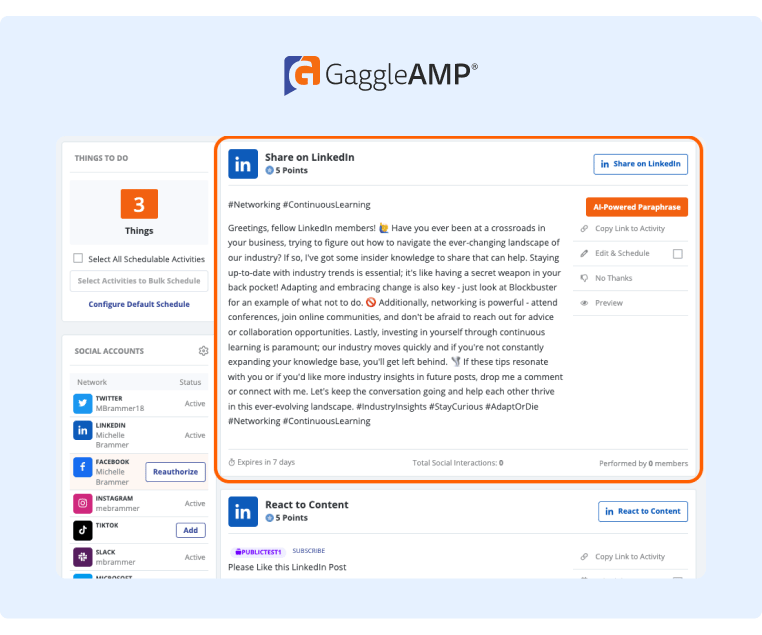
Assigning specific engagement activities with pre-written text significantly reduces the time and effort required from internal advocates to participate in your advocacy program, increasing general participation rates.
Tracking Campaign Success Isn’t Intuitive
Unlike most paid marketing campaigns, accurately measuring the ROI of internal advocacy is tricky as you can't always directly track leads that came from social media. There also aren't many tools available to easily track engagement on all of your employees' social profiles.
To solve this problem, we created the analytics dashboard in GaggleAMP, which provides a detailed overview of each employee advocacy campaign you've run, including which employees participated, total reach, estimated earned media value, and more.
With access to these metrics, you can validate your employee advocacy efforts' impact on stakeholders and your employees. It also makes it easier to understand which campaigns performed best so that you can make iterations to future campaigns based on data.
We also include a benchmarks report so that you can measure the success of your employee advocacy efforts compared to other similar-sized companies.
What Are the Benefits of External Advocacy?
External advocacy also has unique benefits, making it an excellent supplement to internal advocacy efforts. A few of the top benefits of external advocacy we’ll discuss below include:
- Access to new, relevant and comparatively larger networks.
- External advocates can provide a new perspective that resonates with your audience.
- Third-party promotion increases credibility.
- Reduce your team’s time requirements.
Instant Access to New, Relevant, and Comparatively Larger Networks
While employees and stakeholders may have some connections that would be a good fit for your product or service, their network of ideal prospects is typically fairly limited.
Collaborating with micro-influencers is an easy method to quickly get your brand in front of a fresh group of high-quality, relevant prospects.
They've already done the hard work of building a loyal audience, so you can essentially "rent" their audience by paying them to promote it to their network.
Varied Voices and Perspectives
External advocates who haven’t consumed your marketing materials may have a different perspective of your company and its value, which may resonate better with your prospects.
The external advocate’s new perspective may also inspire future marketing campaigns, and it’s excellent feedback for the general company’s value proposition.
Third-Party Promotion Increases Credibility
Third-party promotion, especially from a customer or unpaid influencer, is often highly credible because the audience knows they have no incentive to see the company succeed.
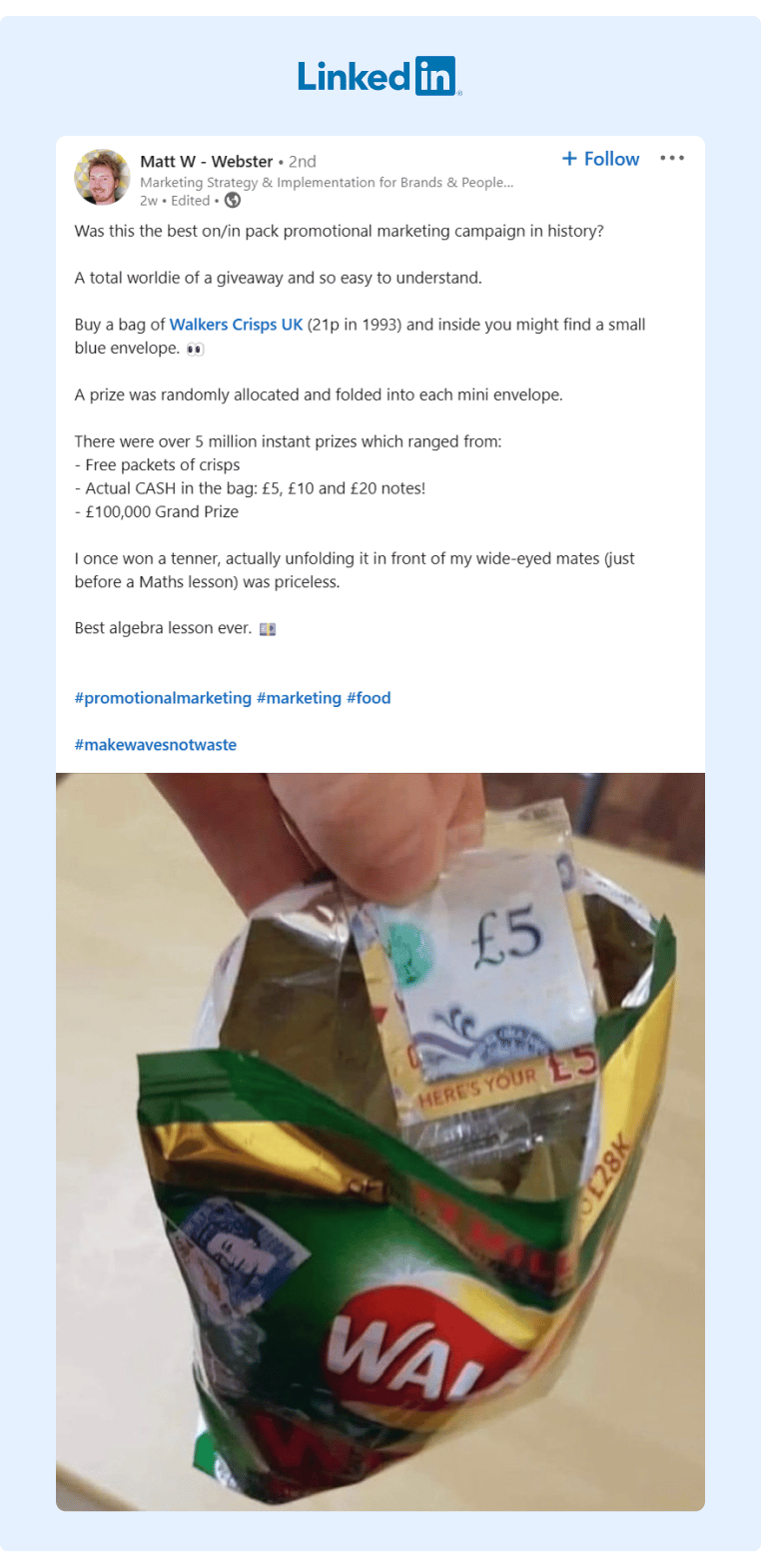
Even paid influencer promotion is often helpful as many influencers are careful about the brands they work with, as the affiliated brand reflects on their personal brand and can impact trust with their audience.
Alleviate Your Team’s Time Requirements
Your internal advocates have limited time and resources to promote the brand, so leveraging external advocates is a great way to alleviate time constraints on your team.
Plenty of platforms, like Upfluence, also allow you to automate the external advocate connection and campaign creation process.
In addition, you can repurpose the content from these third-party promotions as advertising campaigns, which is a great way to reduce creative costs.
What Are the Drawbacks of External Advocacy?
Despite its benefits, external advocacy isn’t a perfect solution, and here are a few of its main drawbacks.
Comparatively High Costs (Requires Upfront Cost)
As external advocates aren't incentivized to see the company succeed, they typically charge brands a fee to promote your product or service to their audience. In addition, your team will have to collaborate with them to approve the creative and messaging, which incurs internal resource costs.
While some influencers charge on a performance basis, most influencers charge a set fee.
Unfortunately, if you're charging a set fee, you can't always guarantee that you'll see a positive ROI on the campaign, making it much riskier than internal advocacy.
Either way, it’s significantly more expensive than internal advocacy, which typically doesn’t require any direct payment to the internal advocate.
Loyalty and Trust Are Largely Unknown
If you collaborate with influencers, you can usually request to see their follower size and conversion metrics. Still, you won't truly know how loyal and trusting their audience is until you collaborate with them.
Unfortunately, if you collaborate with an influencer who has a large following but little trust and loyalty with their audience, the campaign will likely flop.
For example, collaborating with a macro-influencer like the Kardashians might drive a lot of engagement, but the conversion rate will probably be fairly low as only a small percentage of their audience is loyal.
Before selecting an influencer to collaborate with, look through the comments on their posts to gauge follower loyalty.
You can also ask influencers for specific conversion metrics on past campaigns, though there's always a chance that they will make these numbers up. Then you can decide whether a macro-influencer or micro-influencer is a better fit for your brand.
Campaigns May Be Perceived as Inauthentic
Audiences are smart. They know that influencers are often paid to promote products and services, so it's not uncommon that they will discount the authenticity of the product/service recommendation.
In addition, if the influencer doesn't believe in the product, it may be evident in their marketing materials, which can hurt conversion rates.
Brand Reputation Risk
When collaborating with an influencer, you associate your brand with their values.
This is very risky because they could say or do something (following the campaign with your brand) that goes against your values.
For example, when Johnny Depp was under fire for abuse allegations, Disney dropped their partnership with him and had to do crisis PR management.
This negative association damages your brand's reputation, and the damage control (even if the allegations were untrue) can also cost your company more money.
Which Is Better: Internal Advocacy or External Advocacy?
Neither internal advocacy nor external advocacy is the best definitive form of advocacy, as each has unique benefits and drawbacks. Instead, you'll see the best results using them together.
Below, we'll explore a few examples of B2B and B2C brands using internal and external advocacy together.
Best for B2B
Here are a few excellent examples of B2B brands that mix internal and external advocacy.
beehiiv
beehiiv is an increasingly popular platform that makes it easy for creators to launch and monetize newsletters.
Their employees are active internal advocates and constantly post funny memes about the company, as well as more thoughtful culture posts about the brand and product launch announcements. Here’s just one example from an employee about beehiiv’s unlimited book budget:
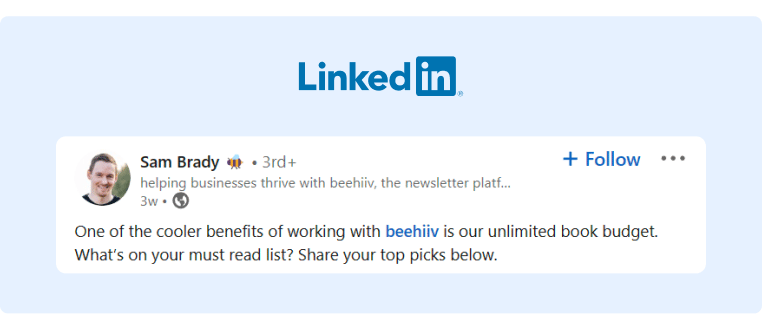
Source: Sam Brady
In fact, their business development lead also stated that internal employee advocacy is critical to their growth:
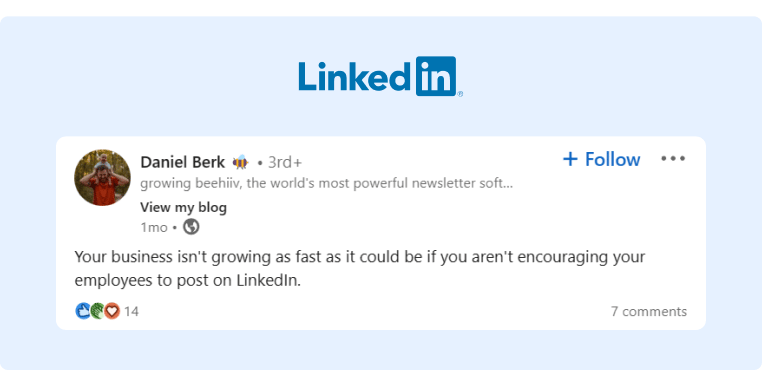
Source: Daniel Berk
However, they also have a thriving external advocacy program, with plenty of affiliates and raving fans of the business. They also regularly reshare external advocates' content to the branded social media page.
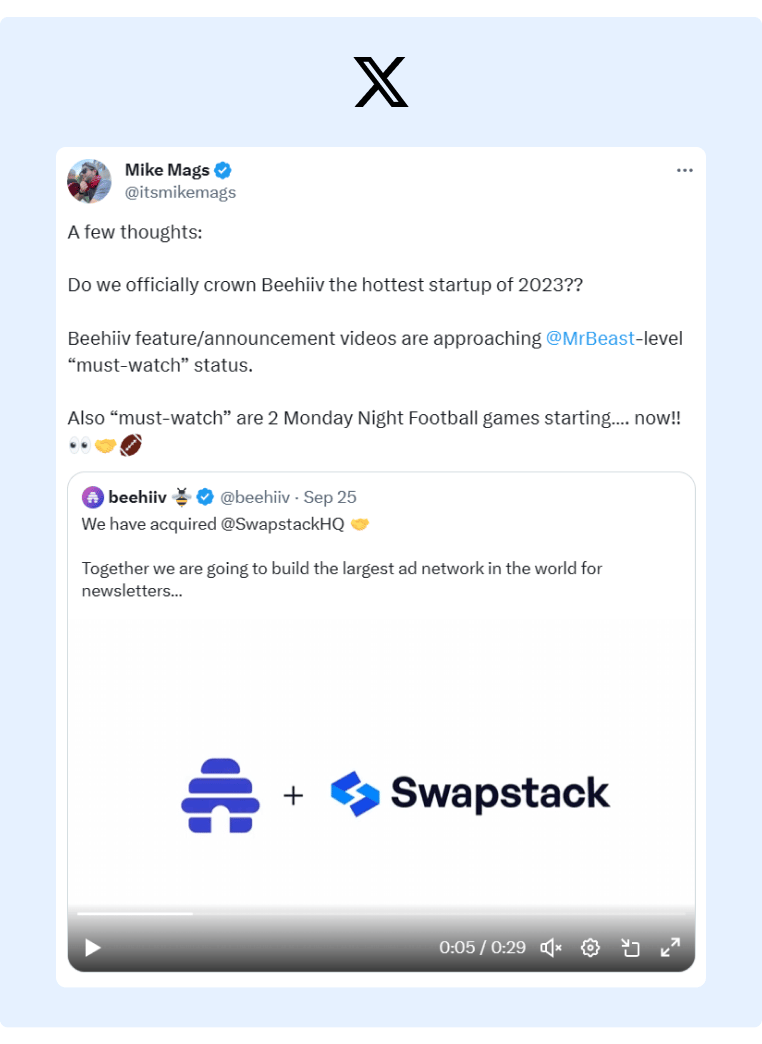
Source: Mike Mags
As you can see, praise from an external advocate here gives beehiiv more credibility, and by resharing the post to its branded page, beehiiv further encourages creators to share content about the brand.
Podia
Podia is a course platform for creators, and they now have a thriving internal and external advocacy program.
First, their employees regularly share product updates and content about the company culture. Here’s a great example:
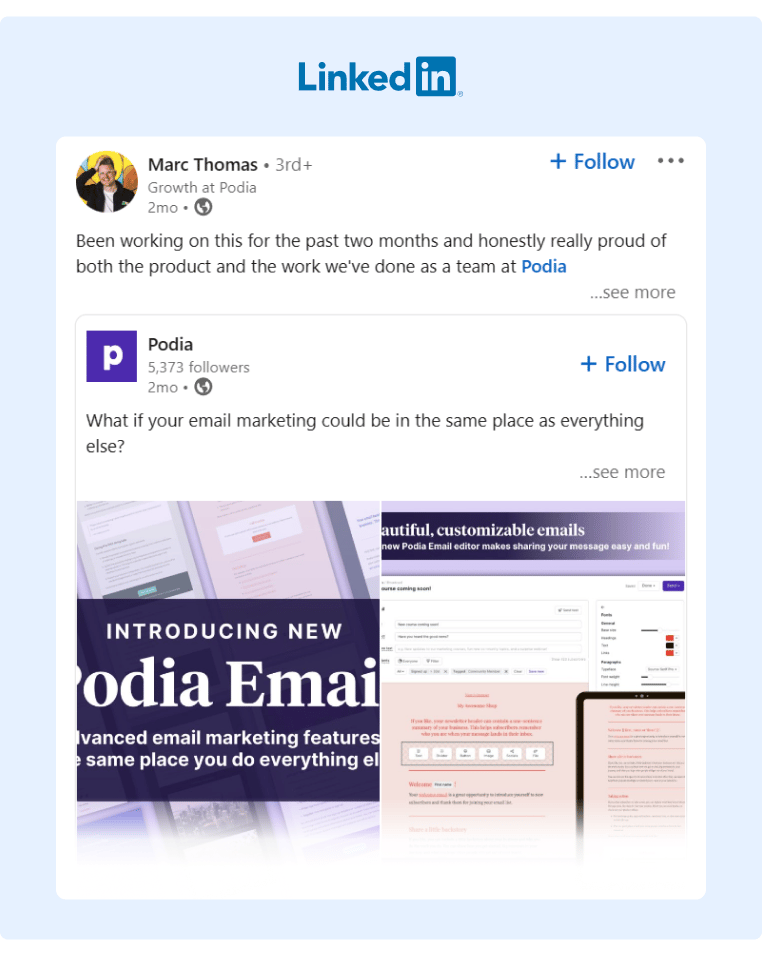
Source: Marc Thomas
Podia also has a thriving group of external advocates and affiliates that frequently mention the product on social media. Here’s just one example:
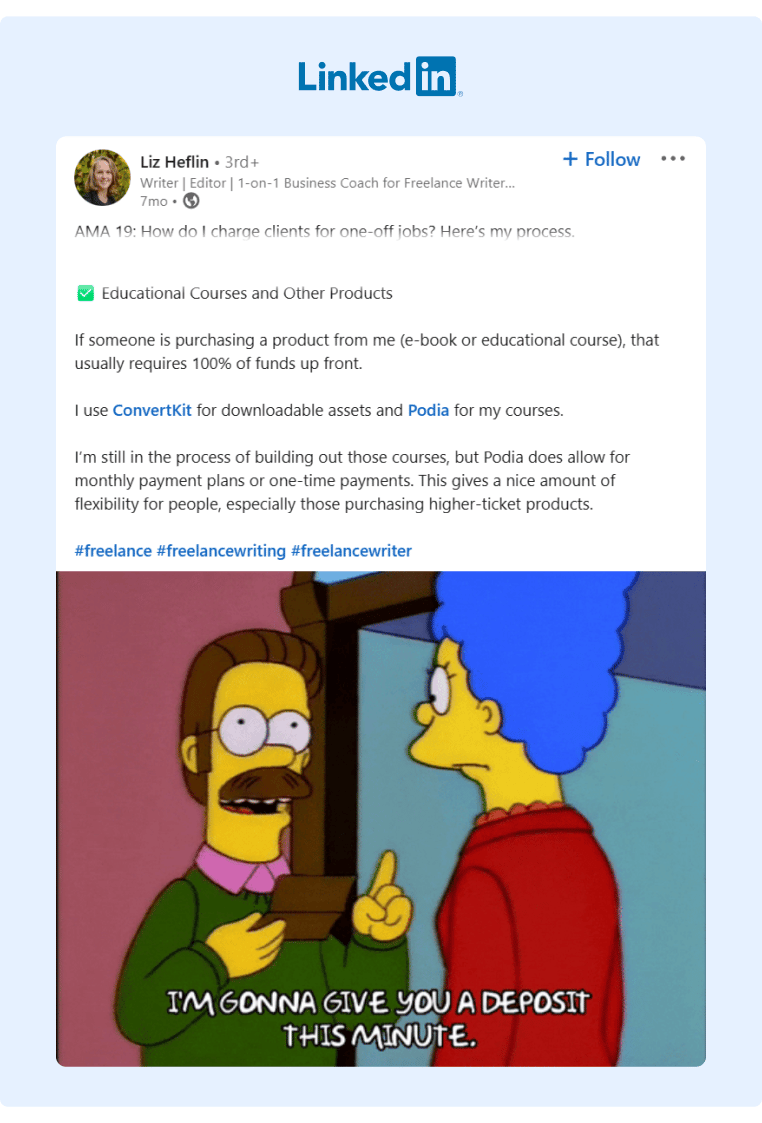
Source: Liz Heflin
Best for B2C
Here are a few examples of B2C brands that effectively use both internal and external advocates to promote their brands.
Chewy
Chewy is a beloved pet brand specializing in cats and dogs, and it's evident that customers and employees love the brand.
First, they have the hashtag #lifeatchewy to encourage employees to post about their experience working for the brand.
Many employees actively use the hashtag and share fun stories about their experiences working at Chewy. Many also add fun pictures of their pets, which tends to help increase engagement!
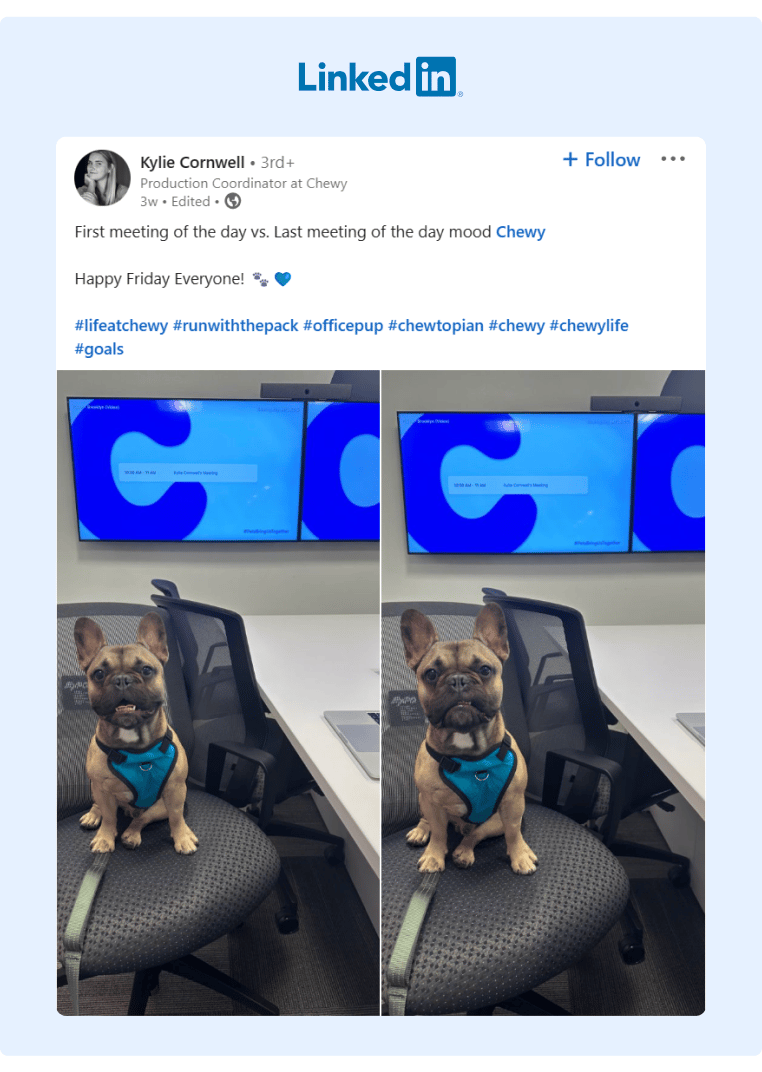
Source: Kylie Cornwell
They also have plenty of external advocates who frequently sing their praises. However, these advocates are fans mainly because they offer great products, great customer service, and well-aligned brand values.
So, if you're wondering how to get more people to rave about your brand, start by simply offering a truly outstanding service.
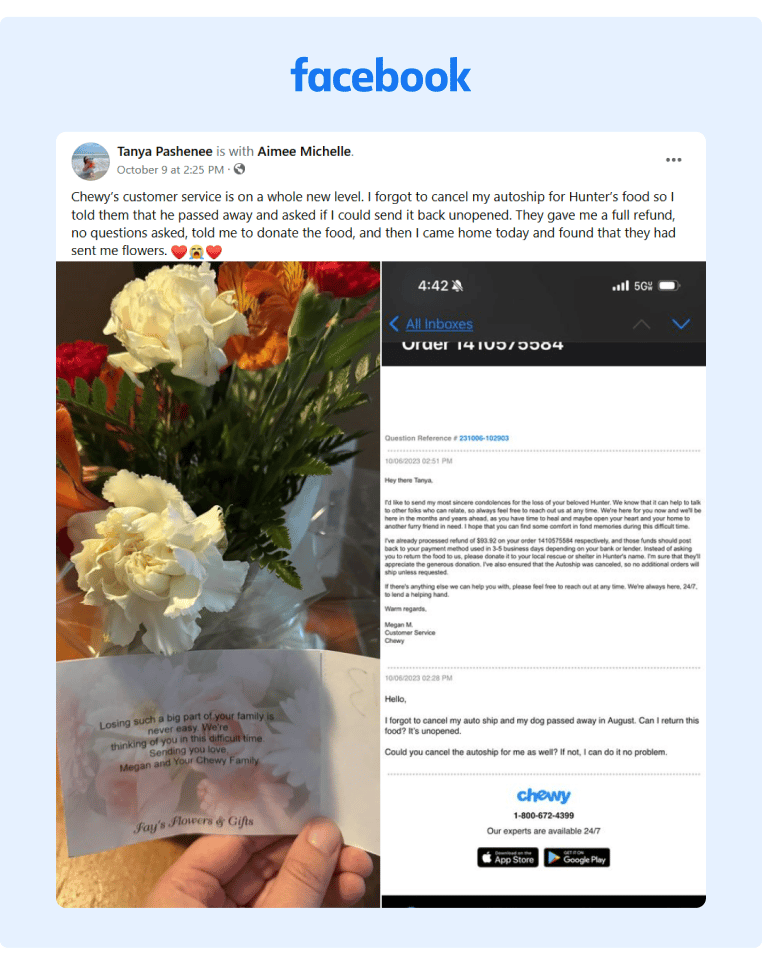
Source: Tanya Pashenee
BetterHelp
BetterHelp is a therapy platform that has grown significantly over the past few months, largely thanks to internal and external advocacy and collaborations.
First, they partner with major influencers like Ariana Grande to promote their product to the general public:
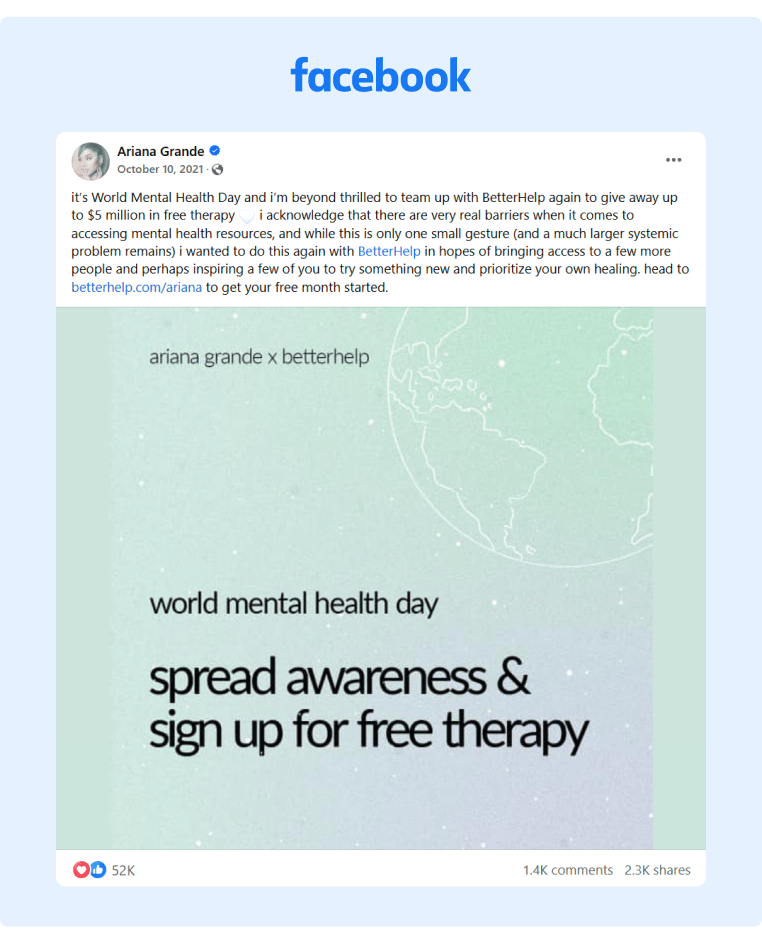
Source: Ariana Grande
However, they also deliver an excellent product that surprises and delights customers. As a result, these customers tend to post about their experiences with the platform online:

Source: Marc Thomas
Their employees are also raving advocates of the brand and frequently share their experiences working with the company on social media:
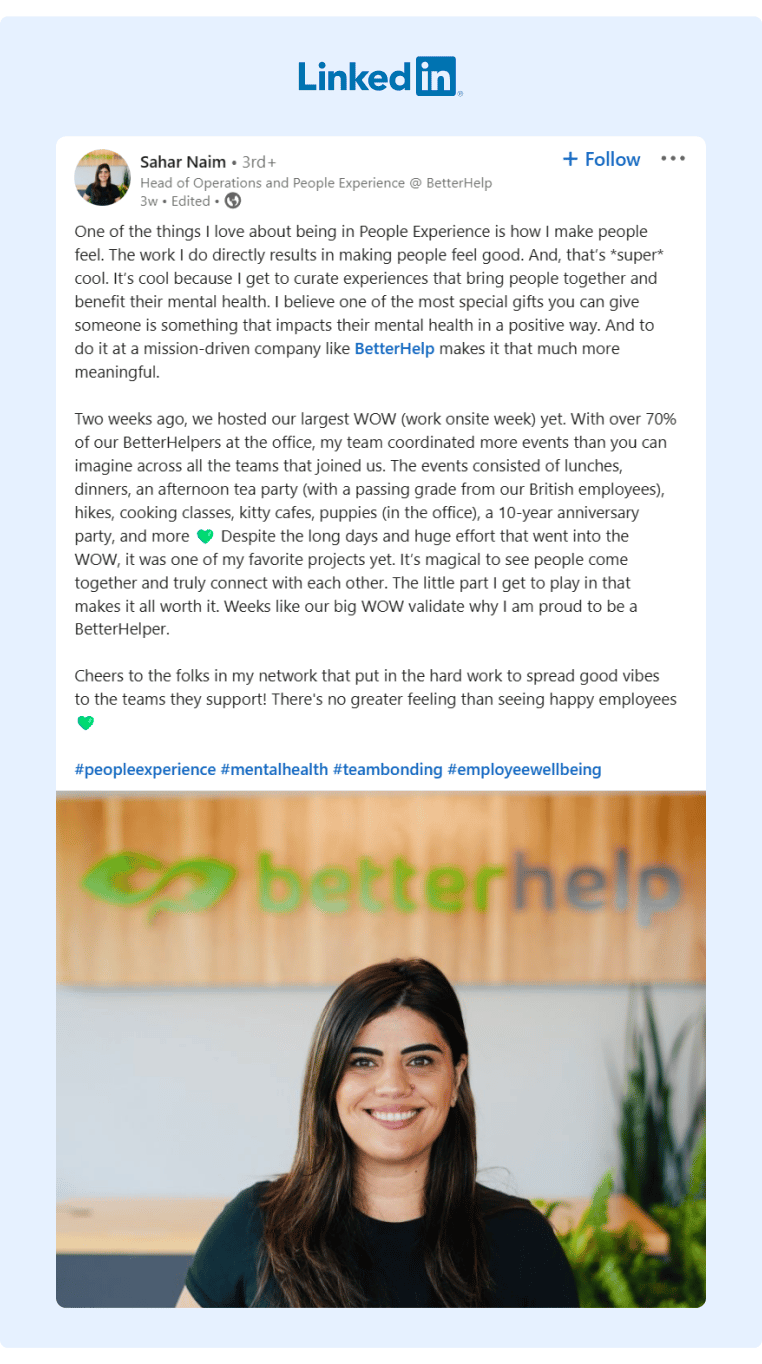
Source: Sahar Naim
Begin Leveraging Internal Advocacy Today
While both internal and external advocacy are beneficial for your brand, internal advocacy is much more cost effective, and it's easier to predictably grow external advocacy.
Therefore, focus on first increasing internal advocacy by asking employees to share content on social media regularly.
If you struggle to keep employees engaged, consider using an employee advocacy platform like GaggleAMP. It allows you to assign engagement activities at scale, track employee participation, and measure the ROI of your efforts.
You can learn more by scheduling a demo or start a free trial today!




